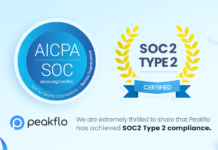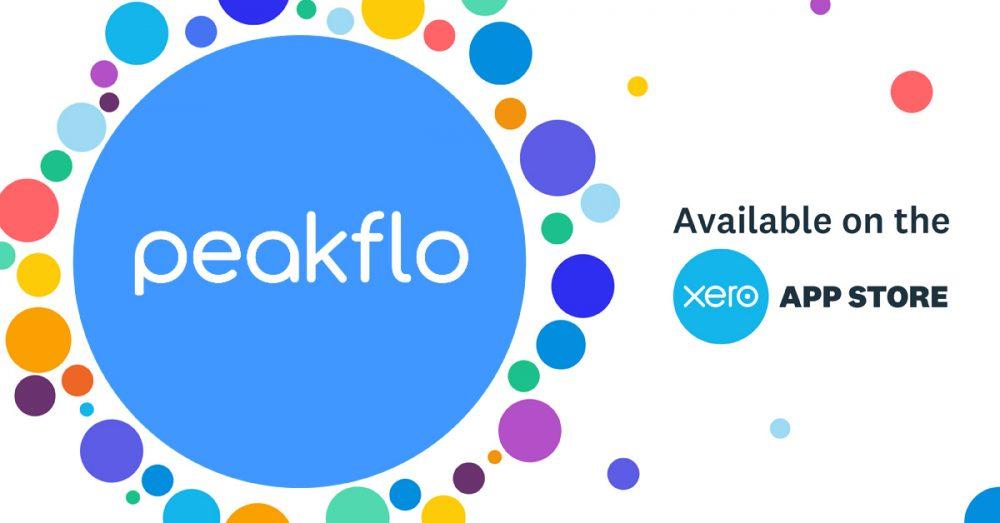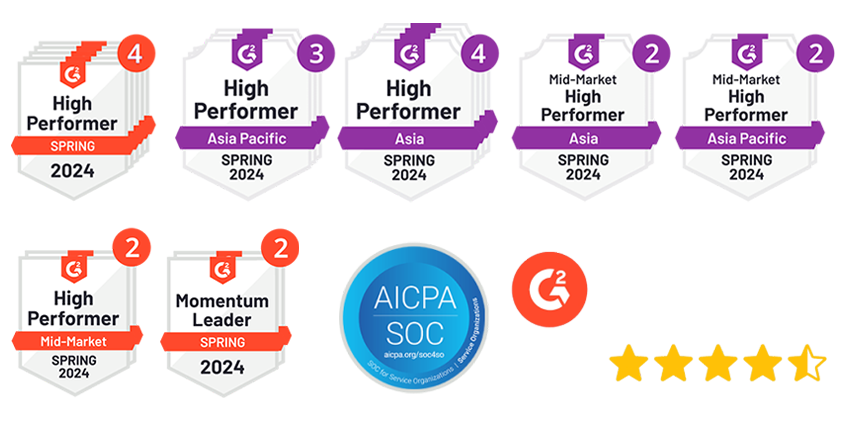Business leaders face a critical decision when choosing between agentic AI vs generative AI for their operations. The core difference lies in how these systems approach work: generative AI creates content like text, images, and video when you provide prompts, while agentic AI performs tasks independently without needing your constant direction. This distinction matters more than you might expect for your business operations.
Generative models wait for your instructions before producing outputs. Agentic AI takes a different approach—it can set objectives, make decisions, and learn from what happens next. These systems work autonomously, handling complex processes without requiring you to guide every step. Where generative AI shines at content creation using machine learning models like LLMs and GANs, agentic AI focuses on making decisions and taking action.
What makes agentic AI particularly valuable is its ability to adapt strategies when conditions change or new information becomes available. Current examples include autonomous vehicles, advanced virtual assistants, and specialized copilots designed for specific business goals—all built to accomplish objectives rather than simply generate responses.
Understanding which AI type works better for different business scenarios can help you make smarter technology decisions. Each approach has distinct advantages depending on your specific needs and the complexity of tasks you want to automate.
Understanding the Core: What is Agentic AI vs Generative AI?
Image Source: Arab Solutions
Different AI technologies serve different business purposes. Understanding their fundamental architectures helps you choose the right approach for your specific needs.
Definition of Generative AI and its reactive nature
Generative AI creates new content by learning patterns from training data. These systems produce text, images, audio, code, and other media when you provide specific prompts. Think of generative AI as a sophisticated pattern-matching system that produces outputs resembling human creativity.
The key limitation is reactivity—generative AI waits for your input before acting. ChatGPT, DALL-E, and Midjourney exemplify this approach, creating content only when prompted. These models work within a request-response framework, requiring your guidance for each task.
Generative AI doesn’t truly understand what it creates. Instead, it identifies statistically probable outputs based on training patterns and your prompts. This approach works well for individual tasks like writing and summarizing, but needs continuous human direction.
Definition of Agentic AI and its autonomous behavior
What makes agentic AI different?
Agentic AI plans and executes complex workflows across multiple systems to reach specific objectives. These systems make decisions, use various tools and APIs, and perform action sequences without needing your constant oversight.
Autonomy defines agentic AI—it works independently toward goals with minimal human intervention. Agentic systems can assess their environment, adapt when conditions change, and learn from experience. This proactive approach breaks complex problems into sequential tasks, building on previous conclusions.
Microsoft’s Copilot and Triple Whale’s Moby Agents show how agentic systems handle complex workflows and make independent decisions. These examples demonstrate the practical value of autonomous operation in business settings.
Contextual Difference between AI and Generative AI
Traditional AI systems analyze data and make predictions within set boundaries. Generative AI extends these capabilities by creating new content that mirrors training data. The distinction lies in function: traditional AI recognizes patterns while generative AI creates them.
Most AI applications focused on specific prediction tasks using rule-based algorithms before the generative AI expansion. Generative AI broadened this scope by learning patterns in massive datasets to produce entirely new outputs.
This difference matters for your technology choices. Traditional AI handles structured data analysis and specific predictions effectively. Generative models excel in creative applications and content synthesis. Both technologies work together in comprehensive solutions addressing complex business challenges.
Key Characteristics: Autonomy, Adaptability, and Intelligence
The practical differences between agentic AI vs generative AI become clear when you examine how each technology operates in real business environments. These functional characteristics explain why certain applications favor one approach over the other.
1. Autonomy: Reactive prompts vs proactive decision-making
Generative AI operates on a request-response model—it waits for your prompts before creating any output. Agentic AI works differently by taking initiative and making decisions without waiting for your next instruction. This autonomous approach allows agentic AI to plan and execute complex tasks across multiple systems to achieve specific goals without requiring continuous human guidance.
Consider the difference: a generative AI system might help you draft an email response to a customer complaint, but an agentic AI system could identify the complaint, research the customer’s history, draft a response, and schedule follow-up actions automatically.
2. Adaptability: Static outputs vs real-time learning
Generative AI produces outputs based on patterns learned during training, operating within those fixed boundaries. Agentic AI processes new information continuously and adjusts its approach through reinforcement learning, where “an AI agent learns by taking actions in an environment and receiving rewards or penalties for its choices”. This learning capability means agentic AI improves its performance over time, similar to how someone learns to ride a bike through practice.
This adaptability matters for business operations that change frequently or involve unpredictable variables. Where generative AI might struggle with new scenarios outside its training data, agentic AI can adapt its strategies based on real-time feedback.
3. Goal Orientation: Task completion vs content generation
What sets agentic AI apart is its focus on accomplishing objectives rather than just creating content. Agentic AI follows a structured approach to problem-solving that includes perceiving, reasoning, acting, and learning. This goal-directed behavior enables it to break down complex objectives into manageable steps and coordinate multiple tasks, tools, and data sources to achieve desired outcomes.
For finance teams, this means agentic AI can handle entire workflows—from invoice processing to payment approvals—while generative AI excels at creating individual components like payment reminders or compliance reports.
4. Environmental Perception: Context awareness in Agentic AI
Agentic AI possesses environmental perception capabilities that allow it to gather and interpret data from its surroundings. Through this contextual awareness, agentic AI can “assess situations and determine the path forward with minimal human input”. Advanced systems can process multimodal data, including videos, images, audio, text, and numbers, giving them a comprehensive understanding of their operational context.
Additionally, agentic AI maintains both short-term memory to preserve context during specific tasks and long-term memory to learn from past experiences. This memory capability allows the system to build on previous interactions and improve its decision-making over time.
Performance in Action: Agentic AI vs Generative AI Examples
Real-world applications reveal clear performance differences between these AI approaches. Here are three practical scenarios that demonstrate how each technology handles different challenges.
Example 1: Chatbot vs Autonomous Customer Service Agent
Standard chatbots powered by generative AI handle routine customer inquiries effectively. They provide answers to frequently asked questions, process basic troubleshooting requests, and manage simple transactions. An e-commerce company might deploy these chatbots for order status updates, return processes, and shipping inquiries.
Autonomous customer service agents take a different approach entirely. These agentic AI systems analyze customer intent and emotional context, then execute resolution steps independently. They can assess complex situations and adjust their response strategies without human oversight. A logistics company using agentic AI might automatically reroute deliveries based on traffic patterns and shipment priorities, solving problems before customers even know they exist.
Example 2: Code generation vs Self-debugging AI
Code generators create functional code from natural language descriptions. However, they often produce errors that require manual debugging and testing by human developers.
Self-debugging AI represents a significant advancement in autonomous problem-solving. Research from the 2024 Conference on Neural Information Processing Systems shows these systems improved pass@k scores by up to 39% on standard benchmark datasets. The key difference lies in their ability to identify and fix their own mistakes. These systems examine execution results, explain their code in natural language, and correct errors without human feedback or error messages. Baseline accuracy improved by up to 12% on certain benchmarks through this self-correction capability.
Image generation produces high-quality visual content from text prompts but operates within static parameters without environmental awareness.
Drone navigation systems demonstrate agentic AI’s real-time decision-making capabilities. These systems process data from multiple sensors—cameras, lidar, and GPS—to make instant decisions about flight paths and obstacle avoidance. During a 40-second scanning process, autonomous drones can document environmental changes as they occur. This environmental awareness enables adaptive responses to unexpected conditions, maintaining flight stability and reaching destinations safely even when original parameters change.
Task Complexity Handling: Which AI Handles More Layers?
Task complexity reveals the clearest performance gaps between these AI approaches. Recent studies provide concrete data on where each technology excels and where it struggles across different complexity levels.
Simple tasks: Generative AI excels in creative outputs
Generative AI demonstrates strong performance with straightforward, well-defined tasks. Current models achieve almost 100% success rates on tasks that take human experts less than 4 minutes to complete. The productivity gains are measurable—business professionals write 59% more documents per hour, and programmers complete 126% more projects per week.
Creative applications represent generative AI’s strongest performance area. Marketing teams can scale content production while maintaining a consistent brand voice across channels. Writers see creativity improvements of up to 26%, with the most significant gains among those who previously struggled with creative tasks.
These results make sense given generative AI’s design. It excels at pattern recognition and replication, making it ideal for content creation, copywriting, and visual design tasks that follow established formats.
Multi-step tasks: Agentic AI’s planning and execution
Complex tasks reveal agentic AI’s architectural advantages. These systems follow a four-step process—perceive, reason, act, and learn—to handle scenarios that would overwhelm simpler models. This structured approach allows agentic AI to break down high-level objectives into actionable steps.
Current frontier agentic models can reliably complete tasks that take human experts up to an hour, with occasional success on tasks requiring several hours. The key difference lies in workflow coordination across multiple systems and tools.
Real-world applications demonstrate this capability. BNY’s AI agents autonomously spot system vulnerabilities, write patches, and validate payment instructions without human oversight. This level of independent operation represents a significant advancement over traditional automation.
Differences in problem-solving approach
The fundamental distinction becomes clear when examining time horizons and decision-making patterns. Generative AI works on narrow, well-defined tasks with immediate outputs. Agentic AI tackles broader, multi-step goals requiring continuous decision-making.
Reinforcement learning gives agentic AI a critical advantage—it improves through trial and error, adapting and optimizing processes that previously required human oversight. This learning capability means performance gets better over time rather than remaining static.
The performance gap continues narrowing as both technologies advance. Current trends suggest generalist autonomous agents may soon handle week-long complex tasks, which could fundamentally change how organizations approach process automation.
What Are the Three Types of AI and How Do They Compare?
AI technology has evolved through three distinct stages, each bringing different capabilities to business operations. Understanding these differences helps you choose the right approach for your specific needs and shows how these technologies can work together in modern business systems.
Traditional AI: Rule-Based Systems with Limited Learning
Traditional AI operates through predefined rules and explicit instructions. These systems excel at handling well-defined problems using logical reasoning and structured data. Developed in the 1950s, traditional AI follows “if-then” logic to process information and make decisions.
Early examples like the General Problem Solver and MYCIN showed traditional AI’s potential in specific areas. However, these systems have significant limitations—they cannot adapt to new situations without human intervention and struggle with complex or unclear data. Updating traditional AI requires manual reprogramming, making it inefficient for changing business environments.
Generative AI: Pattern-Based Content Creation
Generative AI represents a major shift toward more flexible systems. Unlike traditional AI, generative models create original content—text, images, code, or audio—by identifying patterns learned from extensive training data. This approach enables systems to produce outputs that resemble human creativity.
Generative AI handles unstructured data like images and text effectively. However, generative models remain primarily reactive, responding to specific prompts rather than taking independent action. They focus on narrow, well-defined tasks and lack the autonomous decision-making capabilities of more advanced systems.
Agentic AI: Goal-Driven, Adaptive Intelligence
Agentic AI marks the latest evolutionary stage, combining the structured approach of traditional AI with the pattern-recognition capabilities of generative systems. The key characteristic of agentic AI is autonomy—these systems operate independently toward specific goals without continuous human oversight.
Agentic AI is expected to autonomously resolve up to 80% of common customer service issues by 2029, potentially reducing operational costs by 30%. Agentic systems demonstrate environmental awareness, adapting strategies based on changing conditions and unexpected events. They break down complex objectives into manageable steps, working with other systems or humans to achieve desired outcomes.
| AI Type | Primary Function | Autonomy Level | Learning Capability |
|---|---|---|---|
| Traditional | Rule execution | Low | Minimal |
| Generative | Content creation | Medium | Pattern-based |
| Agentic | Goal achievement | High | Continuous adaptation |
Future Outlook: Collaboration or Competition?
Business success with AI technologies doesn’t require choosing one approach over another. Major organizations are discovering that combining agentic and generative AI capabilities produces better results than relying on either technology alone.
Trends in combining Agentic and Generative AI
Tech companies have made substantial investments in agentic functionality over recent years. Google, Microsoft, OpenAI, and others have developed software libraries and frameworks specifically supporting agentic capabilities. Applications like Microsoft Copilot, Amazon Q, and Google’s Project Astra are evolving from knowledge-based to action-based systems.
This integration approach makes business sense—generative AI provides foundational insights that agentic AI can transform into actionable tasks. Together, they enable businesses to move faster and more efficiently by automating workflows and improving operational efficiency.
Agentic AI vs Generative AI characteristics in hybrid models
Hybrid models utilize each technology’s unique strengths for maximum impact. Generative AI excels at creating content and identifying patterns, while agentic AI executes decisions and optimizes processes. Marketing teams can use generative AI to draft campaigns while agentic AI autonomously launches them across channels.
Several industries are already exploring these combinations. Financial services use generative AI to analyze market data while agentic AI executes trades. Cybersecurity teams employ generative AI to simulate potential threats while agentic AI autonomously detects and neutralizes them in real-time.
Predictions for 2025 and beyond
25% of companies using generative AI will launch agentic AI pilots or proofs of concept by 2025, growing to 50% by 2027. The generative AI market is expected to reach USD 62.72 billion by 2025, while the agentic AI market is projected to grow to USD 196.60 billion by 2034 at a stunning 43.8% compound annual growth rate.
Peakflo’s Agentic workflow represents the cutting edge of finance operations automation, changing how businesses handle critical financial processes. Unlike traditional rule-based RPA systems, Peakflo’s AI Agents function as intelligent finance teammates that think, speak, and act autonomously. Finance teams using Peakflo’s Agentic workflows don’t just save time—they reclaim control with traceable, intelligent conversations fully integrated into their systems of record. Experience the future of finance operations with significantly reduced manual effort—schedule your personalized demo today and discover how AI agents can change your financial workflows.
Agentic AI will reshape entire industries as organizations move beyond isolated AI applications toward fully orchestrated AI ecosystems. By 2028, approximately 33% of enterprise software will integrate agentic AI capabilities, creating a future where AI seamlessly augments human capabilities across every sector.
Comparing Agentic AI vs. Generative AI
The table below summarizes key differences between agentic AI and generative AI to help you evaluate which approach fits your specific business needs.
| Characteristic | Agentic AI | Generative AI |
|---|---|---|
| Core Function | Performs autonomous tasks and executes complex workflows | Creates content (text, images, video) in response to prompts |
| Autonomy Level | High – operates independently with minimal human input | Medium – requires constant human guidance and prompts |
| Decision Making | Proactive – takes initiative and sets goals | Reactive – responds only to specific prompts |
| Learning Capability | Dynamic learning through experience and reinforcement | Pattern-based learning from training data |
| Task Complexity | Can handle multi-step tasks and hour-long expert tasks | Excels at simple, creative tasks (< 4 minutes) |
| Environmental Awareness | Can perceive and adapt to changing environments | Limited to predefined patterns in training data |
| Memory Capability | Maintains both short-term and long-term memory | Not mentioned |
| Success Metrics | Can improve pass@k scores by up to 39% in self-debugging | Increases business document writing by 59% |
| Market Projection | USD 196.60 billion by 2034 (43.8% CAGR) | USD 62.72 billion by 2025 |
| Primary Applications | Autonomous vehicles, virtual assistants, and self-debugging systems | Content creation, text generation, image generation |
| Task Planning | Can break down complex objectives into sequential tasks | Single-task focused without sequential planning |
| Adaptability | Continuously processes new information and adjusts behavior | Static outputs based on training data |
Conclusion
The choice between agentic AI vs generative AI isn’t about picking winners and losers—it’s about understanding which tool fits your specific business needs. Generative AI handles content creation tasks effectively, while agentic AI excels at autonomous decision-making and complex workflow management. Each serves different purposes in modern business operations.
For most organizations, the practical approach involves using both technologies strategically. Generative AI can create marketing content, draft documents, and produce visual assets quickly. Agentic AI can manage approvals, coordinate between systems, and handle multi-step processes without constant oversight. The key is matching the right technology to the right business challenge.
What does this mean for your business?
Managing AI adoption requires a proactive approach. Evaluate your current processes, identify automation opportunities, and test solutions systematically. Organizations that strategically combine both AI types position themselves for sustained growth and operational excellence.
The future belongs to businesses that understand how to apply the right AI technology to the right problems. Your competitive advantage comes from smart implementation, not just technology adoption.
FAQs
Q1. What is the main difference between agentic AI and generative AI?
Agentic AI operates autonomously to perform complex tasks and make decisions, while generative AI creates content in response to specific prompts. Agentic AI can set goals and adapt to changing environments, whereas generative AI excels at pattern-based content creation.
Q2. How does agentic AI handle complex tasks compared to generative AI? Agentic AI can break down complex objectives into manageable steps and handle multi-step tasks that may take human experts up to an hour. Generative AI, on the other hand, performs best with simpler, creative tasks that typically take less than 4 minutes for a human to complete.
Q3. Which industries are likely to benefit most from agentic AI?
Industries such as finance, cybersecurity, and customer service are expected to benefit significantly from agentic AI. For example, in financial services, agentic AI can autonomously execute trades, while in customer service, it’s projected to resolve up to 80% of common issues by 2029.
Q4. Are agentic AI and generative AI competing technologies? Rather than competing, agentic AI and generative AI are increasingly seen as complementary technologies. Many companies are exploring hybrid models that combine the content creation strengths of generative AI with the autonomous decision-making capabilities of agentic AI.
Q5. What are the market projections for agentic AI and generative AI? The generative AI market is expected to reach USD 62.72 billion by 2025. The agentic AI market is projected to grow even more rapidly, reaching USD 196.60 billion by 2034 with a compound annual growth rate of 43.8%.










![Why AI Sales Calls Are Making Good Sales Reps Even Better [2025 Guide] ai sales calls](https://blog.peakflo.co/wp-content/uploads/2025/09/65168cf6-3001-4733-8cbc-12d5684cf449-218x150.webp)


































